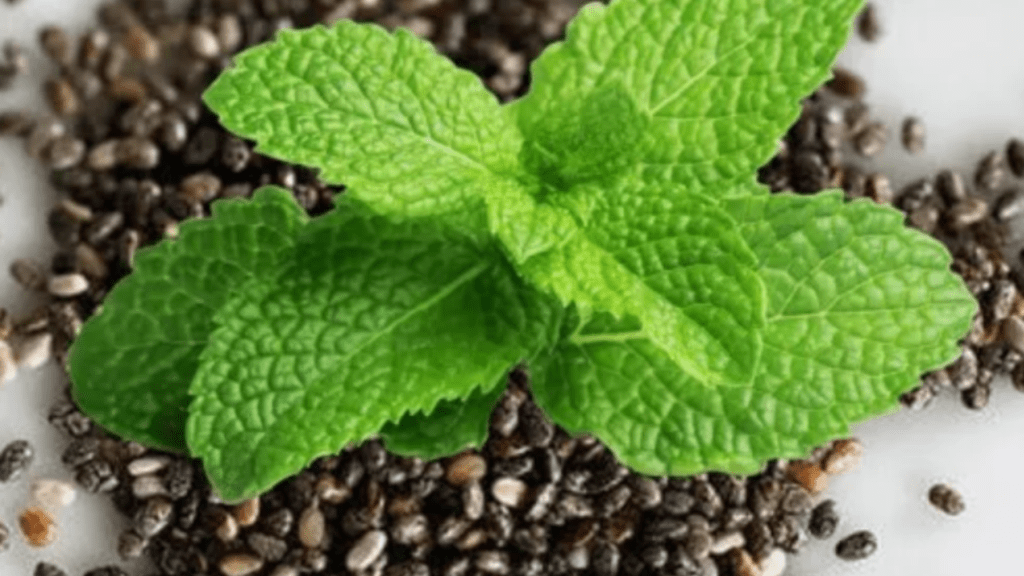
Peppermint Plant Seeds: Grow Your Own Fresh Mint at Home
Are you looking to add some fresh, aromatic mint to your garden? Growing peppermint at home is a great way to have a constant supply of this versatile herb right at your fingertips. In this comprehensive guide, we will walk you through the process of planting, watering, and harvesting peppermint plant seeds so you can enjoy the benefits of fresh mint in your own home. Whether you’re an experienced gardener or a beginner, this step-by-step guide will help you successfully grow your own peppermint and elevate your culinary creations.
Peppermint is a popular herb known for its refreshing scent and uses in cooking, teas, and aromatherapy. With its cooling sensation and soothing properties, peppermint is a versatile herb that can be used in a variety of ways. If you want to have a fresh supply of peppermint on hand, consider growing your own peppermint plant at home. By planting peppermint seeds and taking care of the plant, you can have a constant supply of fresh mint for all your culinary and aromatic needs. Plus, growing your own peppermint can be a fun and rewarding experience, whether you’re a seasoned gardener or a beginner. With the right guidance and care, you can successfully grow your own peppermint plant and enjoy the benefits of having fresh mint at your fingertips.
Table of Contents
ToggleUnderstanding Peppermint Plant Seeds
Peppermint is a versatile and popular herb that can be used in cooking, teas, and aromatherapy. If you’re interested in growing your own peppermint plant, it’s important to understand how to plant and care for the seeds. Peppermint seeds can be planted in well-draining soil and should be kept moist during the germination process. Once the plant has established itself, it will require regular watering and plenty of sunlight to thrive. It’s important to be aware that peppermint is a fast-growing plant and can become invasive, so it’s best to plant it in a container or a designated area of the garden. By understanding the needs of peppermint plant seeds and providing the right care, you can enjoy a constant supply of fresh mint for all your culinary and aromatic needs. Whether you’re an experienced gardener or a beginner, growing your own peppermint plant can be a fun and rewarding experience.
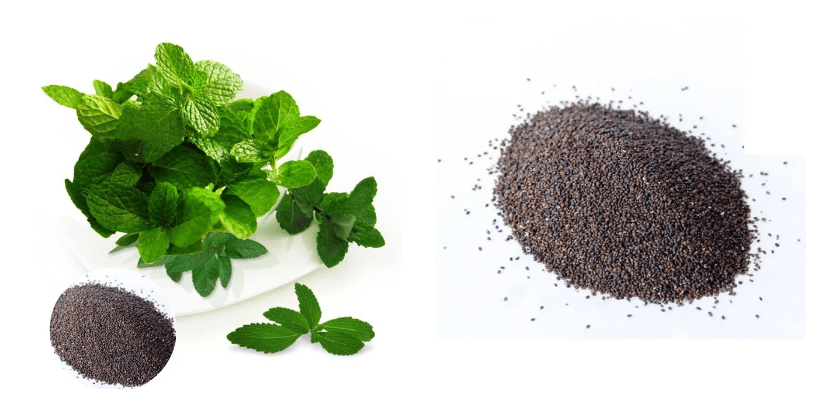
What are peppermint plant seeds?
Peppermint plant seeds are the small, round seeds that are used to grow peppermint plants. These seeds can be sown directly into the soil or started indoors and then transplanted outside. Peppermint seeds require well-drained soil, plenty of sunlight, and regular watering to grow successfully. Once the plant reaches maturity, it will produce fragrant, green leaves that can be harvested and used in cooking, teas, and other applications. Growing peppermint from seeds can be a rewarding and enjoyable experience, and it allows you to have a fresh supply of this versatile herb right at home.
Differences between peppermint and other mint varieties.
Peppermint is a unique variety of mint that is known for its strong, refreshing flavor and aroma. It contains a high concentration of menthol, which gives it its characteristic taste and scent. Other mint varieties, such as spearmint or chocolate mint, have a milder flavor and different chemical compositions. Peppermint is often used in culinary dishes, teas, and aromatherapy products due to its invigorating and cooling properties. It is also commonly used to soothe digestive issues and alleviate headaches. In contrast, other mint varieties may be used for different purposes, such as adding a subtle minty flavor to desserts or beverages. Each mint variety has its own unique qualities and uses, so it’s important to understand the differences when selecting the right type of mint for your needs.
Importance of selecting high-quality seeds for successful growth.
When growing peppermint from seeds, it is important to select high-quality seeds for successful growth. High-quality seeds will have a better chance of germinating and producing healthy and vigorous plants. Look for seeds from reputable suppliers or nurseries to ensure that they are of good quality. It is also important to consider the age of the seeds, as fresher seeds are more likely to germinate successfully. Additionally, consider the specific variety of peppermint seeds you are purchasing, as different varieties may have different growing requirements and characteristics. By selecting high-quality seeds, you can set yourself up for a successful and rewarding peppermint growing experience.
Selecting and Purchasing Peppermint Plant Seeds
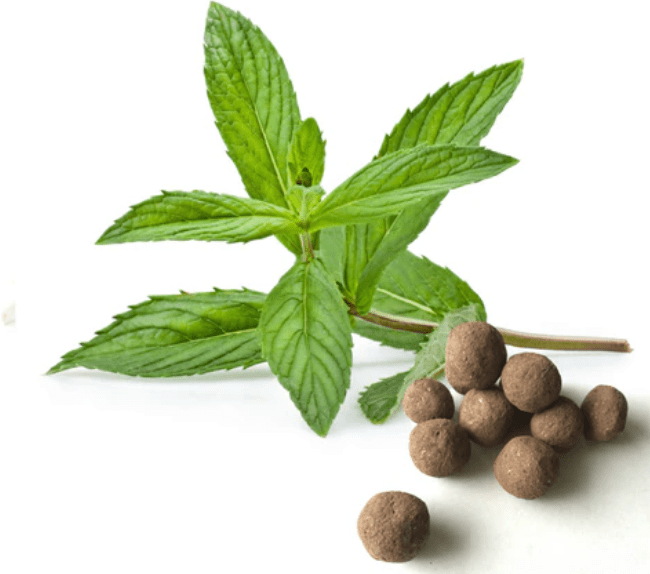
Factors to consider when choosing peppermint seeds.
When choosing peppermint seeds, there are several factors to consider. First, consider the specific variety of peppermint you want to grow. There are many different varieties, each with its own unique flavor and characteristics, so choose the one that best suits your needs. Next, it’s important to choose high-quality seeds from a reputable supplier or nursery. Look for seeds that are fresh and have a good germination rate. Additionally, consider the growing requirements for the specific variety of peppermint you choose, such as sunlight, water, and soil conditions. Finally, consider the intended use for the peppermint, whether it’s for culinary purposes, herbal remedies, or simply for its pleasant fragrance. By taking these factors into account, you can select the best peppermint seeds for your needs and set yourself up for successful growth and cultivation.
Where to buy peppermint plant seeds: nurseries, online stores, or harvesting your own.
When it comes to buying peppermint plant seeds, there are a few options to consider. Nurseries are a great place to find a variety of high-quality peppermint seeds. They often have knowledgeable staff who can help you choose the right seeds for your needs and provide guidance on how to grow them successfully. Online stores also offer a wide selection of peppermint seeds, making it convenient to shop from the comfort of your own home. Just be sure to choose a reputable seller with good customer reviews to ensure the quality of the seeds. If you’re feeling adventurous, you can even harvest your own peppermint seeds from existing plants. This can be a fun and rewarding way to start your peppermint garden. Whichever option you choose, make sure to consider the specific variety of peppermint, growing requirements, and intended use to ensure you select the best seeds for your needs.
Tips for ensuring seed viability and freshness.
When it comes to ensuring seed viability and freshness, there are a few tips to keep in mind. First, it’s important to store seeds in a cool, dry place to prevent them from spoiling or losing their viability. Keeping them in airtight containers or sealed bags can help protect them from moisture and pests. It’s also a good idea to label and date your seed packets so you can keep track of their age and viability. Checking the expiration date on the seed packet can also give you an idea of how fresh the seeds are. When selecting seeds, look for ones that are plump, firm, and have a good color. Avoid seeds that are discolored, shriveled, or have a musty smell, as these may be old or damaged. Lastly, consider purchasing seeds from reputable sellers or nurseries to ensure you are getting high-quality, fresh seeds for your garden. By following these tips, you can help ensure the viability and freshness of your seeds for successful germination and growth.
Preparing for Planting
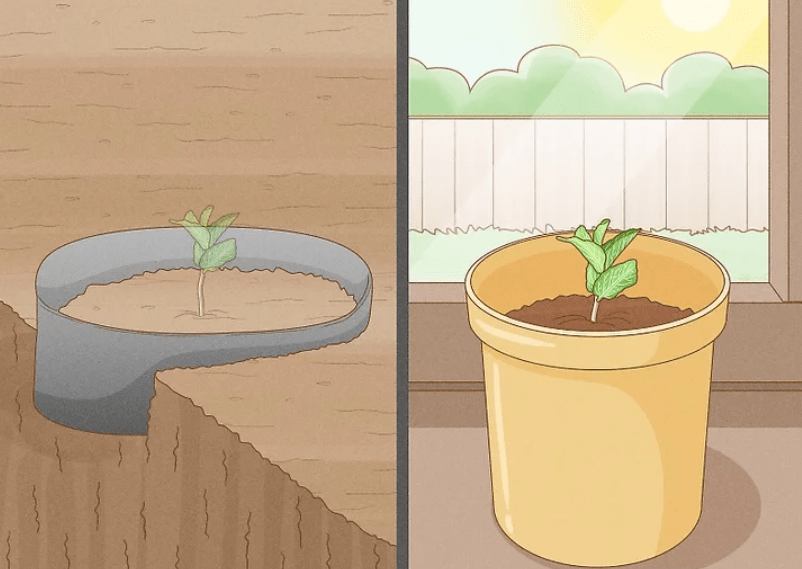
Choosing the right location for your peppermint plants.
When choosing the right location for your peppermint plants, it’s important to consider a few key factors. Peppermint thrives in moist, well-drained soil and prefers partial to full sunlight. It’s best to plant peppermint in a location that receives at least 6 hours of sunlight per day. Additionally, peppermint has a tendency to spread rapidly, so it’s important to choose a location where it can have room to grow without overtaking other plants in your garden. You may want to consider planting peppermint in a container or a designated area to prevent it from spreading uncontrollably. It’s also important to avoid planting peppermint near other plants that it may overtake or near areas where you don’t want it to spread, such as walkways or driveways. By choosing the right location for your peppermint plants, you can ensure their successful growth and keep them contained within your garden.
Ideal soil conditions and preparation.
For successful germination and growth of your seeds, it’s important to prepare the soil properly. Start by choosing a well-drained location for your peppermint plants that receives at least 6 hours of sunlight per day. Peppermint thrives in moist, well-drained soil, so ensure that the soil is loose and well-aerated. You can achieve this by tilling the soil and adding organic matter such as compost or aged manure to improve its texture and fertility. It’s also a good idea to test the pH of the soil and make any necessary adjustments to ensure it falls within the ideal range for peppermint, which is between 6.0 and 7.0. Once the soil is prepared, plant the peppermint seeds or seedlings at the appropriate depth and spacing, and water them thoroughly. By following these tips for soil preparation, you can create the ideal growing conditions for your peppermint plants and promote successful germination and growth.
Importance of sunlight and temperature requirements for peppermint.
Peppermint plants thrive in sunny conditions and require at least 6 hours of sunlight per day to grow successfully. It’s important to choose a well-drained location in your garden with ample sunlight to ensure the optimal growth of your peppermint plants. In addition to sunlight, peppermint also has specific temperature requirements. Peppermint plants prefer cooler temperatures and can tolerate light frosts, making them well-suited for growing in temperate climates. It’s important to consider these sunlight and temperature requirements when selecting a location for your peppermint plants to ensure their successful growth and vitality. By providing the right environmental conditions, you can support the healthy and robust growth of your peppermint plants.
Planting Peppermint Seeds
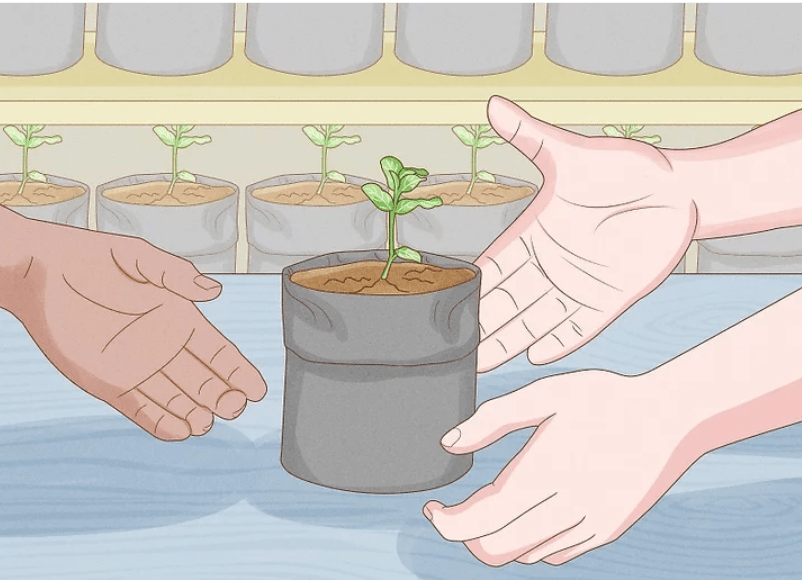
Step-by-step guide on planting peppermint seeds.
Planting peppermint seeds is a great way to grow your own fresh and aromatic herb. Here’s a step-by-step guide on planting peppermint seeds. First, prepare the soil by making sure it is well-drained and rich in organic matter. Once the soil is prepared, plant the peppermint seeds or seedlings at the appropriate depth and spacing, and water them thoroughly. By following these tips for soil preparation, you can create the ideal growing conditions for your peppermint plants and promote successful germination and growth.
In addition to soil preparation, it’s important to consider the sunlight and temperature requirements for peppermint. Peppermint plants thrive in sunny conditions and require at least 6 hours of sunlight per day to grow successfully. It’s important to choose a well-drained location in your garden with ample sunlight to ensure the optimal growth of your peppermint plants. Peppermint also has specific temperature requirements, preferring cooler temperatures and being able to tolerate light frosts, making them well-suited for growing in temperate climates. By providing the right environmental conditions, you can support the healthy and robust growth of your peppermint plants.
In conclusion, planting peppermint seeds requires attention to soil preparation, sunlight, and temperature requirements. By following these steps and providing the right growing conditions, you can successfully grow your own peppermint plants.
Seed preparation and germination process.
Seed preparation and the germination process are important steps in growing plants from seeds. To prepare the seeds for planting, you can start by soaking them in water for a few hours to help soften the seed coat and promote germination. You can also scarify the seeds by gently scratching the seed coat with sandpaper to help water and oxygen penetrate the seed and stimulate germination. After preparing the seeds, you can plant them in a seed-starting mix or directly into the soil. It’s important to keep the soil moist but not waterlogged to support the germination process. You can also cover the planted seeds with a plastic cover or plastic wrap to create a mini greenhouse effect and help retain moisture. In addition, providing warmth and sunlight can also help promote germination. Once the seeds have germinated and the seedlings have emerged, you can remove the covering and continue to care for the seedlings by providing appropriate light, water, and nutrients. By following these steps, you can successfully prepare and germinate seeds to grow healthy and thriving plants.
Planting depth and spacing.
When planting seeds, it’s important to consider the planting depth and spacing to ensure the best possible growth for your plants. The depth at which you plant your seeds will vary depending on the type of plant you are growing. As a general rule, small seeds should be planted at a depth of 1-2 times their diameter, while larger seeds can be planted at a depth of 2-3 times their diameter. The spacing between seeds will also depend on the type of plant and its specific requirements. It’s important to follow the instructions on the seed packet or consult a gardening guide to determine the appropriate spacing for your seeds. Proper planting depth and spacing will help ensure that your plants have enough room to grow and receive the nutrients and sunlight they need to thrive. By paying attention to these important factors, you can set your seeds up for success and enjoy a bountiful harvest.
Caring for Peppermint Plants
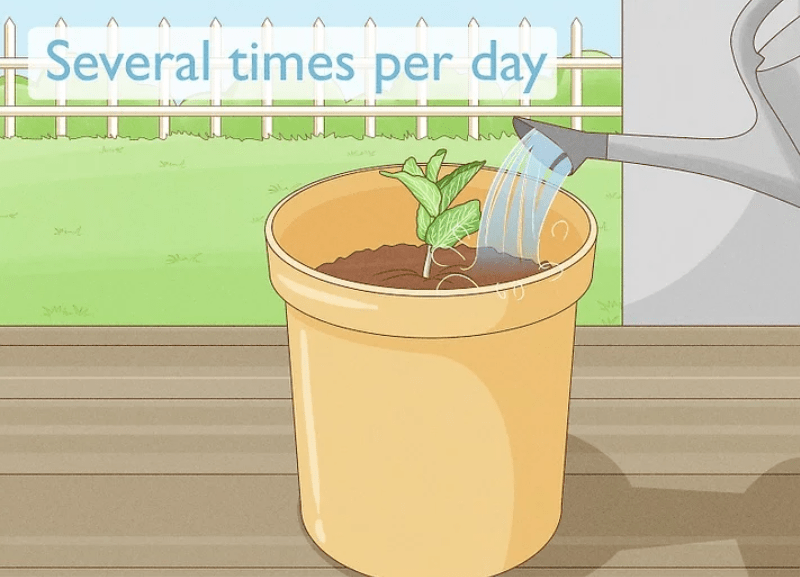
Watering: How much and how often.
When it comes to watering your peppermint plants, it’s important to find the right balance. Peppermint plants prefer moist soil, so it’s important to water them regularly. However, it’s also important not to overwater, as this can lead to root rot. It’s best to water your peppermint plants when the top inch of soil feels dry to the touch. This will ensure that the roots have access to the water they need without becoming waterlogged. In general, peppermint plants will need about 1-2 inches of water per week, but this can vary depending on the climate and soil conditions. It’s also important to water at the base of the plant to avoid getting the leaves wet, as this can lead to disease. By keeping an eye on the soil moisture and adjusting your watering schedule as needed, you can help your peppermint plants to thrive and grow strong.
Fertilization: Types of fertilizer and application schedules.
When it comes to fertilizing your plants, there are a few different options to choose from. You can use a general-purpose fertilizer, such as a 10-10-10 blend, or you can use a specialized fertilizer that is specifically designed for herbs. It’s important to follow the application instructions on the fertilizer packaging to ensure that you are using the correct amount. Generally, it’s best to fertilize your peppermint plants in the spring, just as they are starting to grow. You can also fertilize again in the summer if your plants need an extra boost. Be sure to water your plants after applying the fertilizer to help it soak into the soil. By providing your peppermint plants with the nutrients they need, you can help them to grow strong and healthy.
Pruning and maintaining peppermint plants.
Pruning and maintaining peppermint plants is essential for their health and longevity. Regular pruning helps to promote new growth and prevent the plants from becoming overcrowded. You should prune your peppermint plants regularly to remove any dead or damaged leaves and stems. This will help to improve air circulation and reduce the risk of disease. You can also pinch off the tops of the stems to encourage bushier growth. Additionally, be sure to remove any weeds that may be growing around your peppermint plants, as these can compete for nutrients and water. It’s also important to keep an eye on the soil moisture and adjust your watering schedule as needed to help your peppermint plants thrive. When it comes to fertilizing your plants, there are a few different options to choose from, including general-purpose fertilizers or specialized fertilizers designed for herbs. It’s best to fertilize your peppermint plants in the spring and again in the summer if needed. By providing your peppermint plants with the nutrients they need and maintaining them properly, you can help them to grow strong and healthy.
Harvesting Peppermint
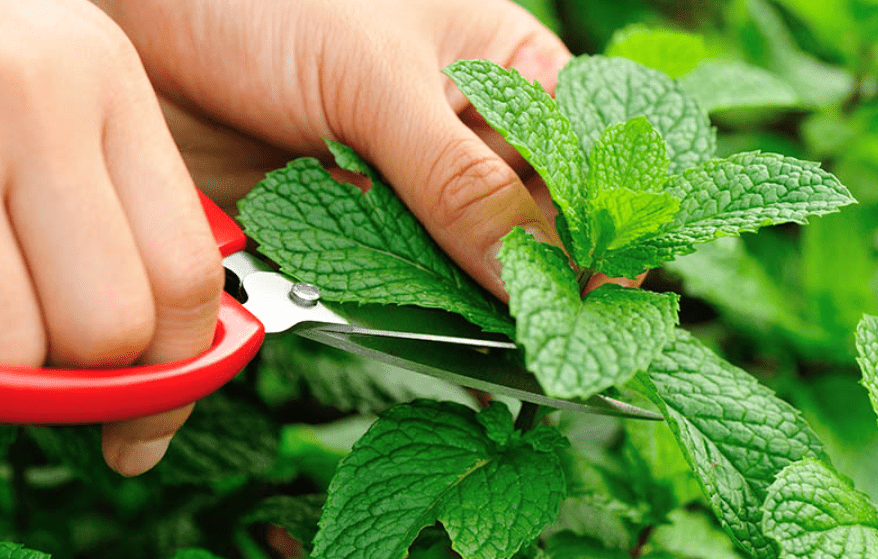
When and how to harvest peppermint leaves.
Peppermint is best harvested in the morning when the essential oils are at their peak. You can harvest the leaves by cutting the stems just above a pair of leaves, leaving at least 2/3 of the plant intact to ensure continued growth. It’s best to use sharp scissors or pruning shears to avoid damaging the plant. You can harvest peppermint throughout the growing season, but it’s best to wait until the plant is at least 6 inches tall before taking any leaves. If you have a lot of peppermint to harvest, you can cut the entire plant to about 1-2 inches above the ground, and it will regrow in a few weeks. Once you have harvested the leaves, you can use them fresh, dried, or frozen for later use. With regular harvesting, your peppermint plant will continue to produce new growth and thrive.
Uses and Benefits of Peppermint
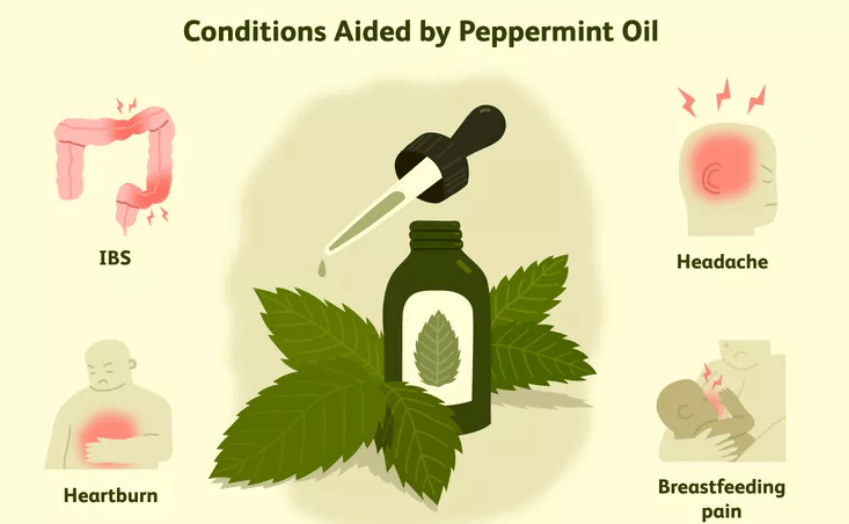
Culinary uses of peppermint in various dishes and beverages.
Peppermint is a versatile herb that can be used in a variety of culinary dishes and beverages. It adds a refreshing and minty flavor to both sweet and savory dishes. Peppermint leaves can be used to make a soothing and aromatic tea, or they can be chopped and added to salads, fruit salads, and desserts for a pop of flavor. Additionally, peppermint essential oil can be used to flavor chocolates, ice cream, and other confections. It can also be used to make peppermint-infused syrups for cocktails and mocktails. In savory dishes, peppermint can be used to add a refreshing twist to sauces, marinades, and dressings. Overall, peppermint is a versatile and delicious herb that can elevate the flavor of many different dishes and beverages.
Health benefits of consuming peppermint.
Peppermint has numerous health benefits when consumed. It has been known to aid in digestion and relieve symptoms of indigestion, such as bloating and gas. Peppermint tea is often used to soothe an upset stomach and promote healthy digestion. It also has calming effects that can help with relaxation and stress relief. Peppermint oil is commonly used in aromatherapy to alleviate headaches and migraines. It can also be applied topically to relieve muscle and joint pain. Additionally, peppermint has antimicrobial properties that can help with oral health by reducing bacteria in the mouth and freshening breath. Overall, consuming peppermint can contribute to better digestion, stress relief, and overall well-being.
In conclusion, growing your own peppermint at home can be a fun and rewarding experience. Not only will you have fresh mint on hand whenever you need it, but you’ll also save money in the long run. Plus, there’s something satisfying about growing your own herbs and seeing the fruits of your labor. So, if you’re interested in starting your own peppermint garden, be sure to follow our comprehensive guide for all the tips and tricks you need to succeed. Happy planting!
Frequently asked questions And Answer
Peppermint seeds should be planted in well-drained soil in a sunny spot. You can start them indoors and then transplant them outside once they have grown a bit.
Peppermint plants like to be kept moist, so water them regularly, especially during dry periods. Just be careful not to overwater, as this can cause root rot.
Peppermint seeds typically take 10-15 days to germinate, but it can vary depending on the conditions and the quality of the seeds.
Yes, peppermint can be grown indoors in a pot as long as it receives plenty of sunlight. Just be sure to give it enough room to spread, as it can be quite a vigorous grower.
You can start harvesting peppermint leaves once the plant is established and has grown to a decent size. Simply snip off the leaves as needed, and the plant will continue to produce more.
Growing peppermint at home allows you to have a fresh and abundant supply of this versatile herb for culinary use, teas, and aromatherapy. It’s also a low-maintenance plant that can be grown in a variety of conditions.
Peppermint is a fast-spreading plant, so if you want to contain it, consider planting it in a pot or a raised bed to prevent it from taking over your garden.
Yes, you can use peppermint seeds to grow new plants, or you can also propagate it through root division or stem cuttings. This allows you to expand your peppermint garden and share it with others.
